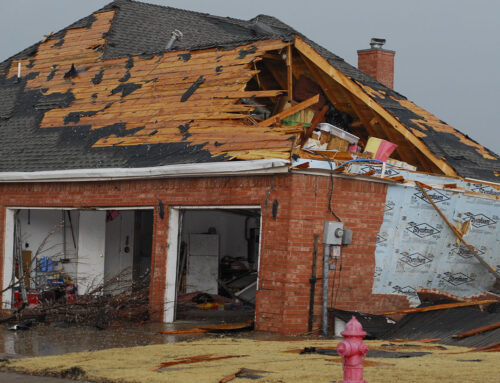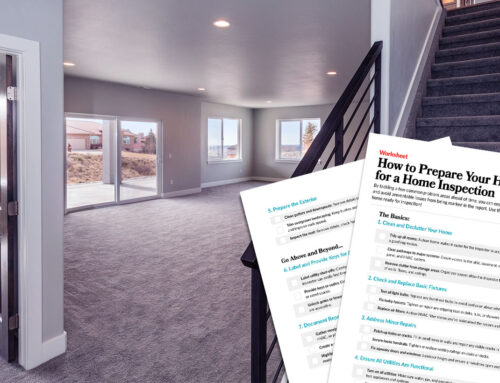
The Dirt On Dirt: Soil Inspections
Home inspectors are not responsible for inspecting or reporting on soil conditions — but knowing them could help you get a much deeper understanding of the properties you inspect. Here is all the dirt on dirt — a little crash course on soil inspections and why they’re important — before you become certified to inspect it.
What Are Soil Inspections?
Like radon, mold, and septic inspections, soil inspecting is another type of environmental inspection that you can offer as an add-on to your regular services. Testing soils and understanding the way different soil types behave when faced against a home foundation is not required of a home inspector. Still, having a little expertise up your sleeve can set you apart in the job market — and make you a client favorite.
With a little special knowledge on dirt, you can give potential homebuyers informed insight on their future homes, or explain why certain issues keep appearing on a seller’s property. Knowledge is power, so today, let’s dig deep.
Soil Types: Yay Or Nay?
When you do a soil test, you’ll primarily be looking for contaminants and nutrient levels in the soil, but understanding soil composition can help you connect all the dots. Here are a handful of common soil types, how to identify them, and what they mean for the property built on them.
Loamy soil – Yay. Loamy soil is comprised of a nice combination of silt, sand, and clay. Because of this, it doesn’t generally shrink, shift, or expand, which means it can support a foundation very well.
Sandy soil – Yay. And nay. Sandy soil drains well, so it can support a home well. However, over time sandy soil shifts, causing a foundation to crack or gap. Homes built on sand would do best with pier foundations, to keep the foundation from shifting over time.
Peaty soil – Nay. But also yay. Peaty soil is made up of decomposed plant matter and high moisture content, making it one of the worst kinds of soil to build a property on — but one of the best for horticulture, as it is full of good organic matter that’ll bolster plant growth. Over time, a property built on peaty soil may sink, settle, and cause cracking in the foundation, basement, and garage, which can cause leaks and other issues over time. But if a homebuyer is looking for land for their farm, this type of soil will maintain optimum fertility.
Chalky soil – Yay. The descriptor “chalky” usually refers to soil that is heavily comprised of limestone or other types of rock. In these cases, rocky soil can provide a stable, high weight-bearing, and water-draining option for a home to be built on. The important thing is that the foundation is level on top of this rocky ground.
Clay soil – Nay. Clay soil is notoriously bad to build property on. It can be soft, meaning a foundation may sink into it, or rain runoff can collect and pool around it. As you probably guessed, this can mean bad news for a foundation, basement, and the overall structural stability of a home. If a property is built on clay soil, take care to look for where the water goes around the home.
What Do Soil Test Kits Look For?
Soil testing kits are the best way for an inspector to determine the chemical makeup of the soil. Like other types of environmental testing, you’ll collect a soil sample, and then send this sample to a lab. The soil test results will show the pH of the soil as well as other chemical makeups, so the buyer can be best informed on where and how to build their property, the property’s farming potential, and more.
Soil pH & Contaminants
Soil inspections are most commonly requested to be done on land where a prospective buyer is hoping to build a home. The history of the grounds and the surrounding areas of a property affect the soil quality more than you might think, and can be a make-or-break detail for a buyer.
A pH between 6-7.5 is optimal for growing crops — not too basic, and not too much acidity. From there, the test results will share levels of the following nutrients (to name a few):
- Phosphorus
- Calcium
- Sulfur
- Nitrogen
- Magnesium
A more extensive soil test can reveal even more elements, like Manganese and Iron.
This is where understanding soil types can come in handy, as different types of soil can generate different amounts of these nutrients. For example, rocky or chalky soil comprised of lots of limestone will likely be high in magnesium, which is great for seed formation, but maybe not as high in phosphorus, which is more prevalent in moist, warm environments.
Get Ready To Rock & Roll
As a home inspector, the opportunities to load your toolbelt with new certifications and specialty knowledge are almost endless. The more you know about homes, the more you can wow your clients and build a lasting, loyal clientele who can turn to you for anything. The best part? It’s easy to get started. Learn more about environmental inspections, and other specialty certifications.




